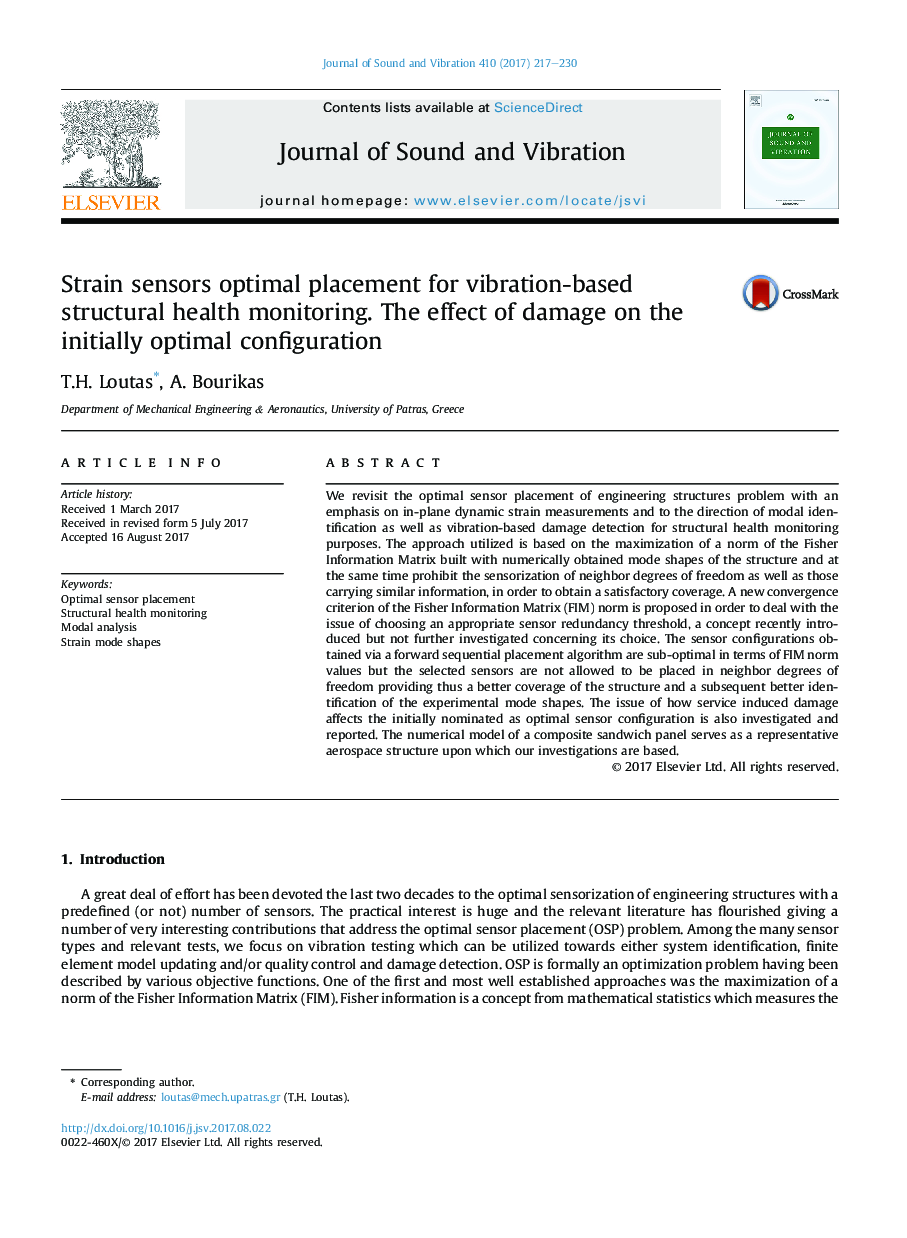| Article ID | Journal | Published Year | Pages | File Type |
|---|---|---|---|---|
| 4923864 | Journal of Sound and Vibration | 2017 | 14 Pages |
Abstract
We revisit the optimal sensor placement of engineering structures problem with an emphasis on in-plane dynamic strain measurements and to the direction of modal identification as well as vibration-based damage detection for structural health monitoring purposes. The approach utilized is based on the maximization of a norm of the Fisher Information Matrix built with numerically obtained mode shapes of the structure and at the same time prohibit the sensorization of neighbor degrees of freedom as well as those carrying similar information, in order to obtain a satisfactory coverage. A new convergence criterion of the Fisher Information Matrix (FIM) norm is proposed in order to deal with the issue of choosing an appropriate sensor redundancy threshold, a concept recently introduced but not further investigated concerning its choice. The sensor configurations obtained via a forward sequential placement algorithm are sub-optimal in terms of FIM norm values but the selected sensors are not allowed to be placed in neighbor degrees of freedom providing thus a better coverage of the structure and a subsequent better identification of the experimental mode shapes. The issue of how service induced damage affects the initially nominated as optimal sensor configuration is also investigated and reported. The numerical model of a composite sandwich panel serves as a representative aerospace structure upon which our investigations are based.
Related Topics
Physical Sciences and Engineering
Engineering
Civil and Structural Engineering
Authors
T.H. Loutas, A. Bourikas,
